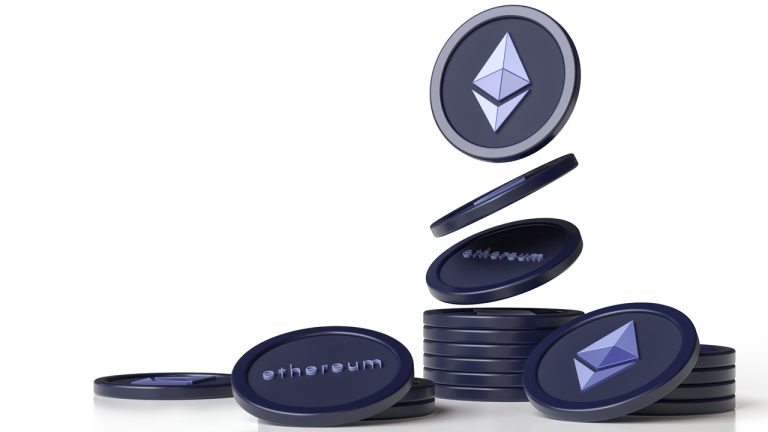 It has been a week since Ethereum’s Shapella hard fork, and statistics indicate that ethereum deposits on April 18 have exceeded withdrawals for the first time since the upgrade. At present, 929,999 ether worth $1.94 billion is pending withdrawal, and over the past three days, 112,568 ether has been added to liquid staking protocols. Just […]
It has been a week since Ethereum’s Shapella hard fork, and statistics indicate that ethereum deposits on April 18 have exceeded withdrawals for the first time since the upgrade. At present, 929,999 ether worth $1.94 billion is pending withdrawal, and over the past three days, 112,568 ether has been added to liquid staking protocols. Just […] On Saturday, several centralized crypto trading platforms and payment processors stopped USDC auto conversions. However, USDC experienced a significant trading volume on decentralized exchange (dex) platforms such as Uniswap, Curve, and Pancakeswap. Uniswap alone recorded $10.13 billion in trades over the past day, with more than 55% of those swaps involving USDC against wrapped ether, […]
On Saturday, several centralized crypto trading platforms and payment processors stopped USDC auto conversions. However, USDC experienced a significant trading volume on decentralized exchange (dex) platforms such as Uniswap, Curve, and Pancakeswap. Uniswap alone recorded $10.13 billion in trades over the past day, with more than 55% of those swaps involving USDC against wrapped ether, […] On March 3, 2023, Uniswap Labs, the firm behind the decentralized exchange Uniswap, announced the launch of a limited early-release application through Apple’s Testflight program. The company stated that the limited release was due to Apple not granting approval for the application launch, and the team does not know why. Uniswap Labs Launches Limited Early-Release […]
On March 3, 2023, Uniswap Labs, the firm behind the decentralized exchange Uniswap, announced the launch of a limited early-release application through Apple’s Testflight program. The company stated that the limited release was due to Apple not granting approval for the application launch, and the team does not know why. Uniswap Labs Launches Limited Early-Release […] According to statistics, decentralized exchange (dex) monthly trading volumes have dropped significantly since Jan. 2022. After a brief spike in volume in Nov. 2022, dex trade volumes have been lackluster for the past 44 days. As of Jan. 14, 2023, Uniswap version three (V3) has the highest trade volume during the past 24 hours at […]
According to statistics, decentralized exchange (dex) monthly trading volumes have dropped significantly since Jan. 2022. After a brief spike in volume in Nov. 2022, dex trade volumes have been lackluster for the past 44 days. As of Jan. 14, 2023, Uniswap version three (V3) has the highest trade volume during the past 24 hours at […]
Some initially interpreted the hack as an exploit of the Uniswap V3 protocol, but it was quickly clarified as the result of a phishing campaign.
A sophisticated phishing campaign targeting liquidity providers (LPs) of the Uniswap v3 protocol has seen attackers make off with at least $4.7 million worth of Ethereum (ETH). However, the community is reporting the losses could be even greater.
Metamask security researcher Harry Denley was one of the first to raise the alarm bells of the attack, telling his 13,000 Twitter followers on July 11 that 73,399 addresses had been sent malicious ERC-20 tokens to steal their assets.
⚠️ As of block 151,223,32, there has been 73,399 address that have been sent a malicious token to target their assets, under the false impression of a $UNI airdrop based on their LP's
— harry.eth (whg.eth) (@sniko_) July 11, 2022
Activity started ~2H ago
0xcf39b7793512f03f2893c16459fd72e65d2ed00c
cc: @Uniswap @etherscan pic.twitter.com/5W51AikFuV
At least $4.7 million in ETH has been lost in the attack, according to a Twitter post from Binance CEO Changpeng “CZ” Zhao. However, there are also reports amongst the crypto community that there may be more significant losses from the incursion.
Prominent crypto Twitter user 0xSisyphus noted on July 11 that a “large LP” with around 16,140 ETH, worth $17.5 million, may have also been phished.
did a large LP get phished?https://t.co/3n6oruM8Hj
— Sisyphus (@0xSisyphus) July 11, 2022
the v3 NFTs in 0x09b5 all originated from this wallet which has 16k ETH ($18m) sitting in it
According to Denley, the phishing attack works by sending unsuspecting users a “malicious token” called “UniswapLP” — made to appear as coming from the legitimate "Uniswap V3: Positions NFT" contract by manipulating the “From” field in the blockchain transaction explorer.
Users curious about their new tokens would be directed to a website purporting to allow them to swap their new tokens for Uniswap’s native token UNI, worth $5.34 each at the time of writing.
The website would instead send the users’ address and browser client info to the attackers’ command center, which would also attempt to drain cryptocurrency from their wallets.
A Reddit post also explaining the attack noted that the attackers had stolen native tokens (ETH), ERC20 tokens, and NFTs (namely Uniswap LP positions) from victims.
Please be aware that there is currently a Phishing scam happening that targets Uniswap V3 LP’s.
— Mel (@belikewater893) July 11, 2022
It does not look like a Uniswap protocol hack.
No matter what, if you get tokens airdropped to your wallet of ynknown origin - DON’T Interact with them !!!
Binance’s CEO Zhao created some waves in the crypto markets when he first sounded alarms about the attack, calling it a “potential exploit” of the Uniswap protocol on the ETH blockchain.
Related: Finance Redefined: Uniswap goes against the bearish trends, overtakes Ethereum
Zhao clarified soon after the post with another update, sharing a conversation with the Uniswap team, who noted the attack was part of a phishing attack rather than any issue with the protocol.
Connected with the @uniswap team. The protocol is safe.
— CZ Binance (@cz_binance) July 11, 2022
The attack looks like from a phishing attack. Both teams responded quickly. All good. Sorry for the alarm.
Learn to protect yourself from phishing. Don't click on links. pic.twitter.com/FIXebz3iBC
CZ’s initial alarming comments coincided with a sharp drop in the Uniswap price, which fell to a 24-hour low of $5.34. The price of UNI has since recovered following the clarification to $5.48 at the time of writing but is still down 11% in 24 hours and is 87.8% down from its all-time-high (ATH).
 Decentralized exchange (dex) volumes have been dropping since December 2021 according to current statistics. However, last month dex trade volumes spiked 2.37% higher than the volumes recorded in February. Despite the brief spike and with only eight days left in April, metrics show this month’s dex volumes will likely be much lower than in March. […]
Decentralized exchange (dex) volumes have been dropping since December 2021 according to current statistics. However, last month dex trade volumes spiked 2.37% higher than the volumes recorded in February. Despite the brief spike and with only eight days left in April, metrics show this month’s dex volumes will likely be much lower than in March. […] On Thursday, Uniswap Labs, the company behind the popular decentralized finance (defi) protocol, Uniswap, launched a tool called the Swap Widget. Essentially, the widget allows developers and decentralized app (dapp) operators to embed the Uniswap decentralized exchange (dex) app with “one line of code.” Software Engineers Can Now Embed Uniswap Swapping Functionality Into Web3 Dapps […]
On Thursday, Uniswap Labs, the company behind the popular decentralized finance (defi) protocol, Uniswap, launched a tool called the Swap Widget. Essentially, the widget allows developers and decentralized app (dapp) operators to embed the Uniswap decentralized exchange (dex) app with “one line of code.” Software Engineers Can Now Embed Uniswap Swapping Functionality Into Web3 Dapps […] This week, the Ethereum network’s burn rate reached a milestone by surpassing 2 million ethereum burned worth $5.81 billion since August 5, 2021. Metrics show the crypto network has a 24-hour burn rate of 1.74 ether per minute, which equates to roughly $5K worth of ether destroyed every 60 seconds. 2 Million Ethereum Burned, More […]
This week, the Ethereum network’s burn rate reached a milestone by surpassing 2 million ethereum burned worth $5.81 billion since August 5, 2021. Metrics show the crypto network has a 24-hour burn rate of 1.74 ether per minute, which equates to roughly $5K worth of ether destroyed every 60 seconds. 2 Million Ethereum Burned, More […] Approximately 205 days ago, the Ethereum network upgraded via the London hard fork which implemented the packaged Ethereum Improvement Proposal (EIP) 1559. Since then, the EIP-1559 upgrade made it so a fraction of gas is destroyed during the transaction process and to date, 1,915,220 ether has been burned worth over $6.9 billion using today’s exchange […]
Approximately 205 days ago, the Ethereum network upgraded via the London hard fork which implemented the packaged Ethereum Improvement Proposal (EIP) 1559. Since then, the EIP-1559 upgrade made it so a fraction of gas is destroyed during the transaction process and to date, 1,915,220 ether has been burned worth over $6.9 billion using today’s exchange […] One of the largest decentralized exchange (dex) platforms in terms of trade volume, Uniswap, has announced that the dex community has approved a governance proposal to support the Polygon blockchain. Uniswap to Support Polygon PoS Blockchain In terms of trade volume, statistics show that Uniswap version three (v3) commands the largest 24-hour trade volume with […]
One of the largest decentralized exchange (dex) platforms in terms of trade volume, Uniswap, has announced that the dex community has approved a governance proposal to support the Polygon blockchain. Uniswap to Support Polygon PoS Blockchain In terms of trade volume, statistics show that Uniswap version three (v3) commands the largest 24-hour trade volume with […]